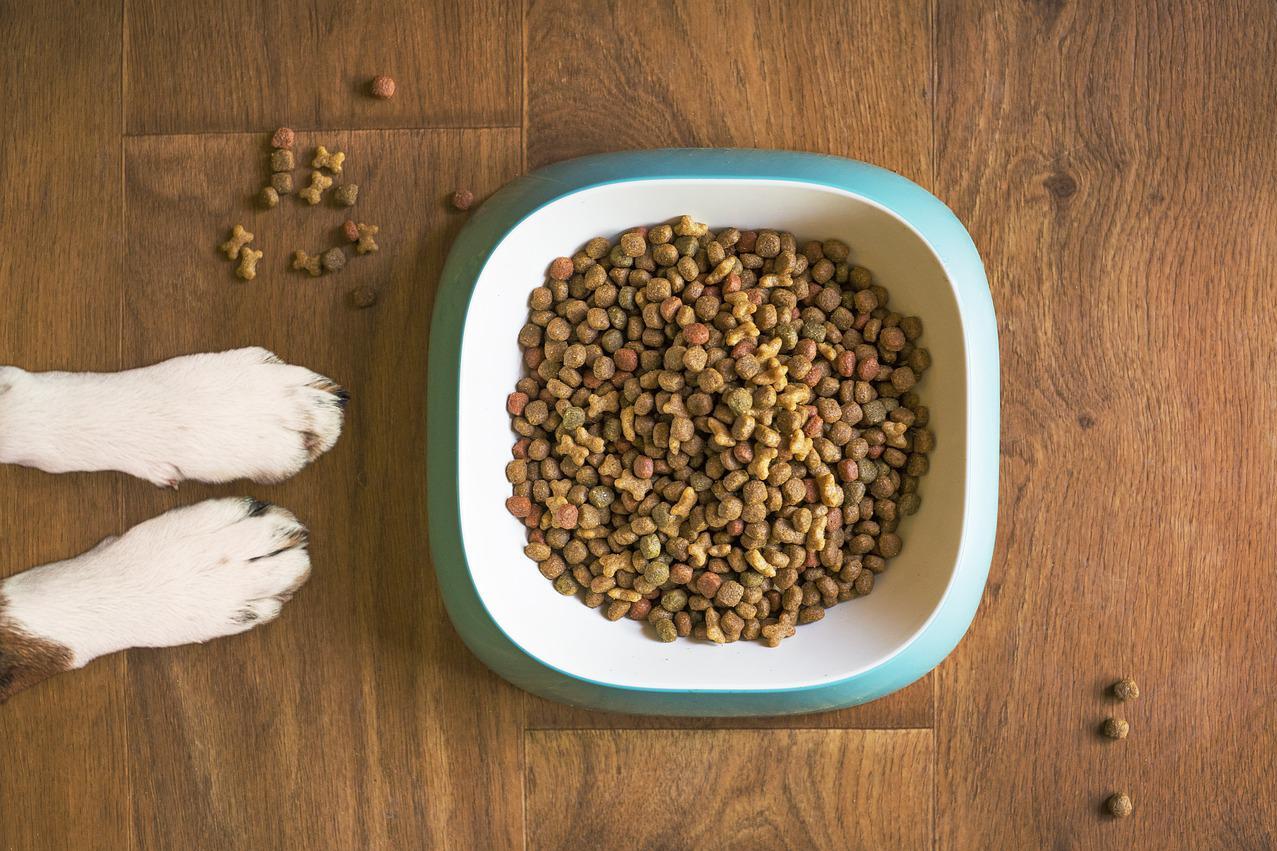New dog food? Study shows Fido's gut bacteria could turn over within a week

URBANA, Ill. – When a dog starts a new diet, the community of microbes in its gut changes. Wallflower bacteria multiply to dominate the scene, with the old guard slinking off in defeat. As microbial species jostle for control, their metabolic byproducts, many of which are critical for Fido’s overall health, change as well.
The dynamic dance between nutrients, microbes, and their chemical products is well documented in dogs and other mammals, but until now, scientists were only guessing at the timeframe for microbial turnover. A new study from University of Illinois animal scientists documents the change takes place in less than a week.
“As long as I've been doing animal nutrition research, we’ve argued over how long we need to feed a new diet before collecting samples, when everything's stabilized,” says Kelly Swanson, Kraft Heinz Company Endowed Professor in Human Nutrition in the Department of Animal Sciences and the Division of Nutritional Sciences at U of I and co-author of the new study. “No one has ever tested it definitively.”
It turns out microbes stabilize very quickly. They begin making entirely new chemical products within two days after dogs start a new diet. And it only takes six days for microbial communities to shift and stabilize.
“Metabolites change really quickly, within a couple days. Bacteria responsively metabolize and deal with the substrates they're given in the new diet. Then it takes a few more days to sort out the microbial pecking order, if you will,” Swanson says. “Our data show everything stabilizes by day six, so animal nutrition researchers could confidently sample and find a stable microbiome within 10 days.”
Swanson’s team fed dogs a common dry kibble diet for two weeks before abruptly switching to new diets for an additional 14 days. Half the dogs ate a high-fat, high-protein canned diet and the other half ate a high-fiber kibble. Meanwhile, researchers collected poop two days after the diet change and every four days after that. Because science demands replication, the researchers did it all twice, switching dogs to the opposite experimental diet the second time around.
The team extracted microbial metabolites from each fecal sample, those chemical products of microbial metabolism that can impact a dog’s overall health. They also identified bacterial species in the fecal samples to show how the microbial community changed over time. Finally, they correlated metabolites with bacterial species, something that hasn’t been done before for most bacteria.
“Oftentimes, we feed a diet and collect the feces, but there's kind of a black box in terms of what’s going on in the gut. We know what some bacterial species metabolize, but definitely a lot of it is unknown,” Swanson says. “Our correlations are the starting point to connect some of the dots, but more targeted research still has to be done.”
The primary goal was to track microbial changes over time, but the research also corroborated previous findings indicating greater health benefits of a high-fiber diet over a high-fat, high-protein diet for dogs. Those findings weren’t a surprise, but the fact that the two diet extremes reached an equilibrium on the same timeframe was unexpected. For both diets, the team detected metabolite changes on day two and bacterial community changes by day six.
Swanson says broad strokes of the study may be applicable to other mammalian microbiome systems, especially those like pets and livestock that eat the same controlled diet every day. For example, the speed at which the gut microbiome responds and stabilizes after a nutritional change may be universal. And although particular bacterial species and strains may differ among dogs, people, and other mammals, metabolite/species correlations may be similar across hosts.
Is there a takeaway for dog owners? Swanson says although his study tested a very abrupt diet change, his results support the common guidance to shift to a new dog food brand gradually.
“People usually suggest moving pets over to a new diet over a seven-day period. Our study suggests the microbes can completely change over in that timeframe,” he says. “When you switch diets, the body has to adjust, but the microbes have to change as well. If they’re not in a happy situation, you end up with loose stools or flatulence. So it’s probably good to do it a bit more gradually at home than we did in the lab.”
This study was done in partnership with NomNomNow, Inc. a direct-to-consumer producer of fresh pet food and health products. Nom Nom has an extensive pet health and microbiome database, which allows them to engage in a variety of microbiome-focused studies in the pet population.
“We’re really excited about the outcomes of this trial,” says Ryan Honaker, Nom Nom’s Director of Microbiology. “Understanding the microbiome is central to our efforts in improving pet health, and this study brings us another step closer uncovering how the canine gut actually responds to a new diet.”
The article, “Longitudinal fecal microbiome and metabolite data demonstrate rapid shifts and subsequent stabilization after an abrupt dietary change in healthy adult dogs,” is published in Animal Microbiome [DOI: 10.1186/s42523-022-00194-9]. Authors include Kelly Swanson, Ching-Yen Lin, Jha Aashish, Patricia Oba, Sofia Yotis, Justin Shmalberg, and Ryan Honaker. The study was funded by USDA’s National Institute of Food and Agriculture and NomNomNow, Inc.
The Department of Animal Sciences and the Division of Nutritional Sciences are in the College of Agricultural, Consumer and Environmental Sciences at the University of Illinois Urbana-Champaign.
Image source: Gentle Dog Trainers